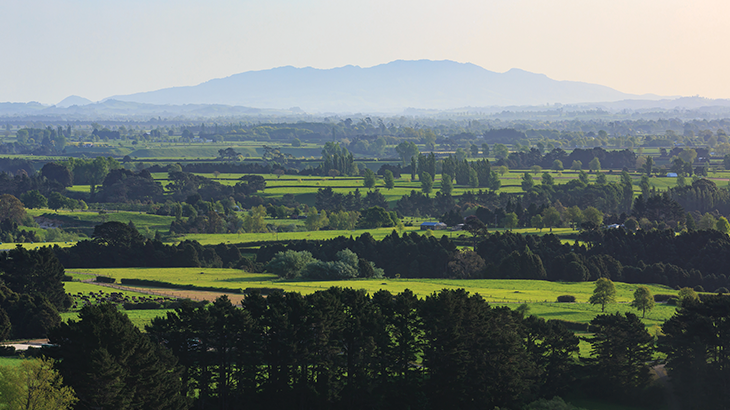View Auckland -
Life on the fringe

Urban residents flocked to the country following the darkest days of pandemic-induced lockdown restrictions, pushing the price of lifestyle properties to new heights before a market correction set in.
Volatility on a global scale, rapidly rising mortgage lending rates, and a heightened cost of living have seen a reversal of the pandemic trend, with many prospective purchasers pushing pause on best-laid plans over the last 12 months.
Bayleys Real Estate’s General Manager of Lifestyle Raymond Mountfort says following a lull in the market, the lifestyle sales sector is primed for a rebound, with sales volumes, buyer enquiries, and land prices all showing early signs of revival.
Data from the Real Estate Institute of New Zealand (REINZ) showed there were 6.2 percent more lifestyle properties sold in the three months to May 2023 when compared with the three months prior – a slow and steady recovery expected to pick up steam with the warmer weather this spring.
PRICES PRIMED FOR REBOUND
With news the residential property market is also gaining forward momentum, Mountfort says Kiwis are feeling more encouraged to make decisive moves, with many seeing the present as an excellent time to capture value.
“Depressive market factors have lightened considerably lately – the Reserve Bank (RBNZ) has held the official cash rate (OCR) for the first time in 22 months, signalling the end of the monetary policy tightening cycle, and consumer price inflation has eased ever-so-slightly in the June quarter.
“While inflation remains high, and Kiwis clearly concerned about the cost of living, sentiment is improving, and we’re seeing this come through transaction activity, buyer enquiries and a warming in the general market temperature.”
Despite this, he says supply is one area currently constraining the lifestyle sector’s ability to grow, with a reduction in the number of available listings unable to keep pace with rising demand, particularly as the pipeline for new construction grows weaker.
Demand for general housing outstripped new supply in both quarter four 2022 and quarter one 2023 – with economists from ANZ Bank now estimating a shortfall of some 5,500 dwellings.
“This mightn’t seem huge, but given we largely eroded the housing deficit during the last construction boom, the rate at which demand builds to outstrip supply quickly is an area to watch.”
WHAT’S DRIVING DEMAND?
New Zealanders have an innate affinity with the outdoors, which has always driven a strong lifestyle sales sector and meant our population is reasonably widely dispersed across the country.
However, the recent boom in migration is set to add further demand for lifestyle properties in the years ahead.
Approximately 64,000 people have come to New Zealand from countries all over the world. While many will rent rather than own, history has shown that a good chunk eventually shifts away from urban centres and into regional areas for a better quality of life.
“Estimates show it could take up to a year for net migration to have its maximum impact on house price inflation, so given we’re only at the start of this migratory cycle, I’d expect to see upward pressure on values fully flow through the marketplace by this time next year,” Mountfort says.
In addition to pressure from abroad, Kiwis are feeling more confident about their financial prospects, with strong wage growth and employment opportunities supporting confidence.
While mortgage lending rates have risen rapidly, leaving some borrowers in difficulty, the New Zealand Bankers Association has reported that almost 45 percent of mortgage holders are actually ahead on their repayments.
Roughly half of these borrowers have opted to keep repayments at the same level as their old schedule when refixing – and those rolling onto higher rates are opting in greater frequency for short-term fixes like six months and one year.
“These are higher short-term rates, however signal that consumers expect mortgage lending rates will fall in the not-too-distant future. “Confidence in the financial system is giving more house hunters a reason to trade up, with many looking to lifestyle destinations such as north Auckland’s Coatesville, north Waikato’s Morrinsville and the Western Bay of Plenty for a blend of accessibility, large land plots and privacy,” Mountfort says.
ELECTION INTERVENTION
Despite green shoots appearing, Mountfort says the looming general election and the increasing noise surrounding policy announcements weigh heavily on the lifestyle sales sector.
“Buyers have flagged concerns about who will form the next government, and it seems likely this is causing some to wait out this period on the sidelines before making their move.
“The National Party has revealed housing policies that would unlock 30 years’ worth of housing via infill, brownfields and greenfield development - but just how this would affect landowners on city fringes remains unclear.
“In a similar vein of uncertainty, current government policy is murky about development around urban limits, and we need only look at examples of private plan change requests to see inconsistencies in council rulings.”
Despite this, Mountfort says an emphasis on infrastructure and fixing roading issues is a buoy for the lifestyle sector, with greater connectivity to fringe areas providing even greater impetus for Kiwis to shift out of urban confines.
“Light rail, public transport networks, and streamlined road access – like the improved Waikato Expressway – are creating efficiencies in once rural areas.
“We’re seeing more businesses shift operations to the regions, and with that comes a higher level of amenity, employment opportunity and a more vibrant community scene.”